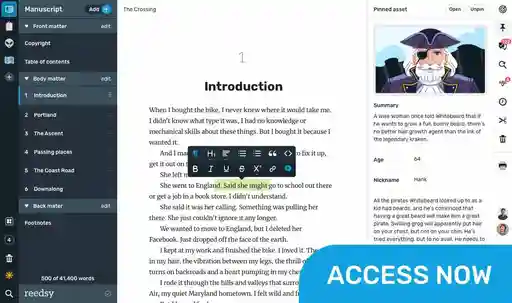Blog • Understanding Publishing
Last updated on Oct 14, 2025
The Ultimate List of Book Genres: 35 Popular Genres, Explained
Martin Cavannagh
Head of Content at Reedsy, Martin has spent over eight years helping writers turn their ambitions into reality. As a voice in the indie publishing space, he has written for a number of outlets and spoken at conferences, including the 2024 Writers Summit at the London Book Fair.
View profile →Authors need to have a firm grasp on all the different genres of books in order to find the perfect home for their own. The tropes and expectations of a book’s genre will inform its content and style during the writing process, as well as fundamentals such as word count. But it’s also central to the marketing of a book, determining its target audience and those all-important Amazon categories.
Get your genre wrong and you could be waving goodbye to book sales — not to mention inviting bad reviews! To make this easier, here’s a clear overview of the top book genres (both fiction and nonfiction) in publishing — a handy reference to understand exactly where your story fits on the bookshelf.
|
Genre |
Key Traits |
Examples |
|
🧑🎓 Young Adult (YA) |
Teen protagonists, identity and coming-of-age, often serialized |
They Both Die at the End, One of Us Is Lying |
|
🧙 Fantasy |
Magical worlds, epic quests, rich lore |
The Hobbit, A Court of Thorns and Roses |
|
👻 Horror |
Supernatural or psychological fear, societal anxieties |
Mexican Gothic, The Only Good Indians |
|
🔍 Mystery/Thriller |
Suspenseful, plot-driven storytelling |
The Silent Patient, Gone Girl |
|
❤️ Romance |
Emotional arcs, relationships, hopeful resolutions |
Happy Place, Before We Were Strangers |
|
🏳️🌈 LGBTQ+ Fiction |
Queer perspectives, diverse identities, emotional depth |
The Song of Achilles, They Never Learn |
|
🎬 Pop Culture Nonfiction |
Analysis of media, celebrity, internet culture |
Trick Mirror, Everything I Need I Get from You |
|
🕰️ Historical Nonfiction |
Deep dives into past events with modern context |
The Wager, Empire of Pain |
|
🕵️♀️ Investigative Journalism |
In-depth reporting, truth-seeking, real-world impact |
Say Nothing, Bad Blood |
|
✍️ Memoir |
Personal storytelling, transformation, authenticity |
Crying in H Mart, I’m Glad My Mom Died |
|
💡 Self-Help |
Motivation, mindfulness, and behavioral change |
The Mountain Is You, The Subtle Art of Not Giving a F*ck |
How many book genres are there?
Though we’re only covering 35 of the most popular in this post, there are around 50 genres in total — the exact number depends on who you ask. If you take subgenres into account, over on Reedsy Discovery we have 107 different categories, while Amazon has over 16,000!
That can be a lot to take in. So if you'd like some personalized guidance, we recommend taking this 1-minute quiz that will point you towards your genre (and subgenre).
🖊️
Which genre (or subgenre) am I writing?
Find out which genre your book belongs to. It only takes a minute!
And for guided advice on how to choose the right genre for your book, you can take a pointer or two from the professional editors on our marketplace:
Q: How do I choose the right genre for my book?
Suggested answer
My advice is to not worry about genre until you've written the manuscript. This way, you're writing with the passion you have for the story you want to tell, rather than trying to conform to the expectations of a certain genre that your story may or may not fit into. It complicates the drafting process.
When you're finished drafting, think about the kinds of books you've read that seem similar in style, tone, voice, pacing, structure, themes, etc. What bookshelves are they sitting on? What are they listed under on Amazon and Goodreads? Google them, like this: What genre is [Title of Book] by [Author Name]? You might get a few different genres in the search results, and that's ok. Once you have a list of possible books with an established pattern of genres, you can start to narrow down where yours might sit.
Research the traditional elements, themes, and expectations of that genre. Does yours contain those same qualities? We also tend to write stories in the same style as some of our favourite authors and books that we gravitate toward, so take a look at some of their books. Does it seem to have some similarities?
Once you nail down some good comparable titles, you'll be able to narrow down your story's genre. Don't compare the plot; instead, look for story elements. If you'll be pitching your book to agents, you'll want to choose two strong comp titles (with author names) to use in the query letter, and the genre of these books typically must match the genre in which you're pitching your book. This helps the agent determine what kind of a story they're in for as they get into the plot paragraphs and allows them to envision where it might sit on bookshelves. This can also be useful for marketing purposes when it comes time.
So: story first, genre later!
Kathleen is available to hire on Reedsy ⏺
There are two ways to look at this. First, you want to play to your strengths. Have you gotten good feedback for your fantasy stories? What genre is easiest for you to plot and write in? What genre gets you excited?
Second, you want to "go where they are not." This was advice received from young adult author and multiple award-winner, Richard Peck when attending a writing retreat. If there is a glut of westerns in the market, for instance, with lots of competition, you may want to steer clear of this genre. However, if this genre has books flying off the shelves and selling like hot cakes, it might be time to throw your hat in the ring if this is something you enjoy writing.
Overall, writers tend to do better when they write what they know and read, and write stories they really want to tell.
Finally, another question to ask yourself is, "What is the story only I can write?" And then try writing that story.
Melody is available to hire on Reedsy ⏺
For an overview of all of the genres, that's what the rest of this post is for. There’s bound to be a genre that’s the perfect fit for your book — all you have to do is find it!
Fiction genres
As Khaled Hosseini said: “Writing fiction is the act of weaving a series of lies to arrive at a greater truth.” Let's dive into the wide world of fiction genres.
Fantasy
This book genre is characterized by elements of magic or the supernatural and is often inspired by mythology or folklore. In high fantasy — one that’s set in an entirely fictional world — these magical elements are at the forefront of the plot, as in Trudi Canavan’s Black Magician trilogy. In low fantasy or magical realism, however, magic is subtly woven into an otherwise familiar, real-world setting. You can delve into fantasy’s many subgenres to get to know your Arcanepunk from your Flintlock, and find your book’s home!
Pro tip for writing fantasy: To make your world feels real and functional, make sure it’s grounded in rules — an internal rationale, so to speak, encompassing everything from the workings of your society to your magic system.
Science Fiction
Though science fiction and fantasy are often considered two sides of the same (speculative fiction) coin, sci-fi is distinguished by its preoccupation with real or real-feeling science. Lots of sci-fi is set in the distant future, which makes it a seedbed for stories about time travel and space exploration. But your science fiction novel doesn’t need to be inspired by “hard” science like physics and astronomy. Some popular works in this genre reflect on “soft” sciences, such as sociology and anthropology, to predict the future of the human race — more on that next!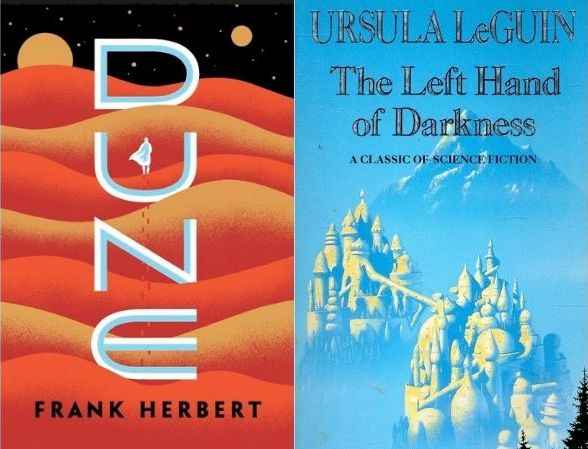
Dystopian
A popular genre of science fiction, dystopian novels offer a bleak and frightening vision of the future. Authors writing dystopias imagine a grim society, often in the aftermath of a disaster, facing things like oppressive governments, Black Mirror-esque technology, and environmental ruin. From widely popular series like The Hunger Games to critically-acclaimed classics like 1984, the enduring appeal of dystopian fiction lies in our burning desire to know where mankind is headed — and our perverse enjoyment of dark stories, so long as they aren’t actually happening to us.
Q: What's the best piece of writing advice for an author who wants to improve their craft?
Suggested answer
Join critique groups! These were invaluable to me when it I started writing and even taught me how to edit! Reading books will become dated with old advice, so stay up to date with blogs, trends, audiences, and read, read, read!
Stephanie is available to hire on Reedsy ⏺
Practice and read!
In the same way that you need to practice a musical instrument to get better, you need to do the same with writing too. Very few writers will publish the first book they ever write!
The other thing that will help you to improve your writing craft is reading. Read the books that are selling well in your genre right now, not just the bestsellers from a decade ago. Study them. Look at the reviews for these books and listen to what readers are saying.
There are loads of brilliant books that will help you to write an effective novel as well (Into the Woods by John Yorke, The Science of Storytelling by Will Storr, Story Genius by Lisa Cron and Save the Cat Writes a Novel by Jessica Brody are a few of my favourites). Even if you don't agree with everything they say (I don't necessarily agree with every piece of advice in the above!) it's so helpful to see a range of different perspectives. You'll also quickly be able to see the patterns and advice from these books in the bestsellers you read. There are also loads of podcasts, blog posts, YouTube videos and audiobooks out there too, as well as Reedsy's own masterclasses!
Siân is available to hire on Reedsy ⏺
Action & Adventure
If you’re writing adventure, then chances are your book follows the structure of the Hero’s Journey, also known as the monomyth. Your protagonist has a very important goal to achieve, but they’re really going to have to go through the wringer first! You throw up obstacle after obstacle, putting your hero in downright dangerous situations but eventually, they triumph and return home transformed. The action and adventure genre also complements a huge range of others, which means it has its fingers in everything from fantasy novels like The Hobbit to classic romance like Jane Eyre.
Mystery
Also called detective fiction, this book genre is characterized by a gripping plot that revolves around a mystery — but hopefully, you’ve cracked that clue! The setting, characters, and tone of your book will determine precisely which category it falls under: cozy mystery, hardboiled, or something in between. But at the core of any mystery is a crime that must be solved by the protagonist. To get a sense of the clever trail of clues that’s so vital to this genre, check out Murder on the Orient Express by Agatha Christie — the grande dame of mystery fiction.
Pro tip for writing a mystery: When planning your novel, consult the Fichtean curve, a narrative structure that emphasizes mini-crises, ratcheting up the tension to keep readers anxious to reach the climax.
Horror
What unites the books in this genre is not theme, plot, or setting, but the feeling they inspire in the reader: your pulse quickens, and your skin prickles as you turn the page with bated breath. Of course, this feeling of dread only comes about if the author creates the right atmosphere — an essential feature dependent on the subgenre. Gothic horror, for example, sends a shiver down your spine with spooky settings and paranormal elements, while gross-out horror shocks the reader with hacked-up flesh and buckets of blood. The master of horror fiction in all its guises? Stephen King, of course.
Pro tip for writing horror: Make the stakes plain and straightforward — survival, the death of a loved one, etc. — and clearly establish them for the reader, so they are in no doubt about the character’s motivation.
Hire an editor in your genre today
Glenys N.
Available to hire
An award-winning children's author and freelance editor, ready to help YOU make your children's book the very best it can be.
Peter L.
Available to hire
Seasoned editor / award-winning author / college teacher / pastor. I specialize in making writing flow like water–from sentence to book.
Bess M.
Available to hire
I'm an experienced writer/editor who has worked in book publishing. I specialize in editing anthologies, memoirs, and business books.
Thriller & Suspense
A horror story can also be called a thriller, if it employs psychological fear to build suspense. But not all thrillers are horror stories. So what are they? While this book genre encompasses many of the same elements as mystery, in a thriller the protagonist is usually acting to save their own life, rather than to solve the crime. Thrillers typically include cliffhangers, deception, high emotional stakes, and plenty of action — keeping the reader on the edge of their seat until the book’s climax. Gillian Flynn’s Gone Girl is a masterclass in the dark, mysterious thriller.
Pro tip for writing a thriller: Avoid anything that bogs down the pacing. If you notice that a scene is getting tied up in everyday details, or doesn’t add enough excitement to the plot, rewrite it or cut it altogether!
Historical Fiction
This book genre encompasses fictional stories in a historical setting, carefully balancing creativity and facts. In most cases, the characters and events are imagined by the author and enriched with historically accurate details from a specific time period. Take The Help by Kathryn Stockett, for example — a fictional story set in Mississippi during the Civil Rights Movement. But occasionally, as is the case with Hilary Mantel’s Cromwell trilogy, the author builds the main story around real historical figures and events.
Like almost all of these genres, it's crucial that historical fiction works in exposition and historical detail subtly. Want to learn more about how to do this? Check out our free course on the golden writing rule, Show, Don't Tell.

FREE COURSE
Show, Don't Tell
Master the golden rule of writing in 10 five-minute lessons.
Romance
Romance is so frequently used as a subplot that it can sometimes be tricky to know whether or not you’re writing in this genre. The key thing to remember is that the romantic relationship must be the center point of the plot. (Other giveaways include a “happily ever after” ending and the warm fuzzies.) If your novel has a romantic relationship at its heart and is perfectly at home in another genre, it probably falls into one of romance’s many subgenres, including but not limited to: young adult romance, paranormal romance, and historical romance.
Q: What factors contribute to the success of self-published authors in the romance genre?
Suggested answer
I think the most successful self-published or indie authors in romance have or consider the following:
- They read widely in the genre and take in just as much as they are putting out. They don't only read their genres, but they actively learn from other genres and writers.
- They rework the manuscript and run it by multiple people: alpha readers, beta readers, editors, writing communities, etc. It takes a lot to make a book good, and sometimes we can overlook issues because we're so attached to the writing. Self Published and Indie authors work on their own and don't get the benefit of an agent or in-house editorial team, so if they want their writing to stand out they need to make their own editorial team.
- A solid launch plan or strategy. Indie authors and Self Published Authors who are trying to succeed (if we mean high sales) need to have a strong strategy and marketing plan in place. They aren't just writing for the sake of writing at that point, but making it a business so there needs to be effort put into how they share about their books.
- A writing community. Bonding with other self published authors, connecting with local indie bookstores, joining writing communities, etc. All of this helps you build a support team and offers you a chance to help others succeed as well.
Val is available to hire on Reedsy ⏺
It's all about romance readers. The ones who love romance tend to be voracious readers, consuming more fiction than other genre readers, though they also read widely and across genres. So there's a huge appetite for constant new stories. Romance readers also don't mind--in fact they expect--that the books use familiar tropes, as long as they're delivered in a fresh way.
It's also important to remember that successful self-published romance authors are romance readers themselves, who love and respect the genre, and so they deliver it in a satisfying way.
Margot is available to hire on Reedsy ⏺
No matter what genre you write in, there must be a strong protagonist that is likable and relatable to readers. You want a main character that readers will root for throughout the story. This does not mean they need to be perfect, just likable. Think about what characters you like in a friend, and give your main character those qualities.
Melody is available to hire on Reedsy ⏺
Women’s Fiction
Women’s fiction is an umbrella term for books written to target a female audience, generally reflecting on the shared experience of being a woman or the growth of a female protagonist. Because of this rather broad definition, authors will quite often write a romance novel or mystery, for example, that could also be labeled women’s fiction. Despite the connotations of one alternative name for this genre (“chick-lit”), many critically acclaimed bestsellers, including Jaqueline Woodson’s Red at The Bone, fall under its purview.
LGBTQ+
Any fiction with authentic LGBTQ+ representation falls into this book genre. It’s important to note that while your book’s queer characters should feature in the main plot, the centerpiece of your plot doesn’t have to be a romance. In fact, there doesn’t need to be any romance at all! This means that your fantasy, thriller, or historical novel could fall under the LGBTQ+ umbrella. 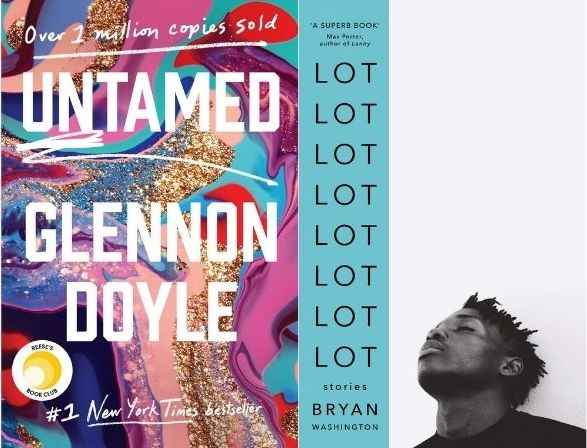
Contemporary Fiction
This book genre is occasionally lumped in with others to indicate that the book takes place in the present day. But in its simplest form, contemporary fiction is better understood as the absence of a genre. Your book doesn’t need tropes and trappings, monsters and mysteries, when its tension, drama, and conflict lies in the quirks and quandaries of your protagonist’s everyday life: work, politics, relationships, and the struggles of the modern era.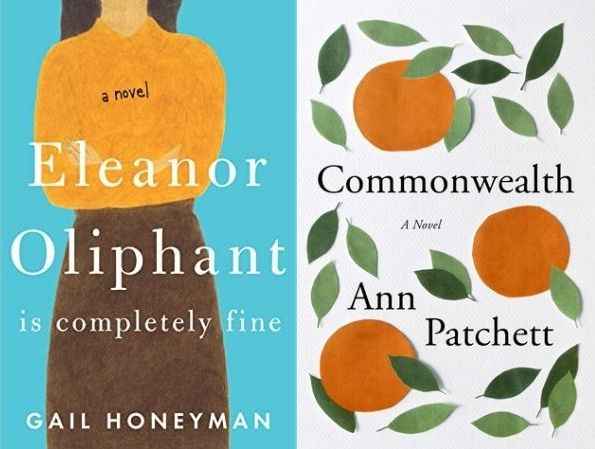
Literary Fiction
Like contemporary fiction, books considered literary fiction can’t be neatly filed under any other genre. What distinguishes this genre from contemporary fiction is that works of literary fiction are thought to have considerable artistic value. If your prose is meant to engage the reader in thought, if your narrative is character-driven and introspective, and if you provide personal or social commentary on a “serious” theme, then chances are you’re writing lit-fic. Modern classics by the likes of Virginia Woolf or Ali Smith would be labeled literary fiction.
Like we mentioned, lit-fic is heavy on character, and lighter on plot. If you're interested in writing a character-driven story, try out our profile template for developing well-rounded, fully realized ones.
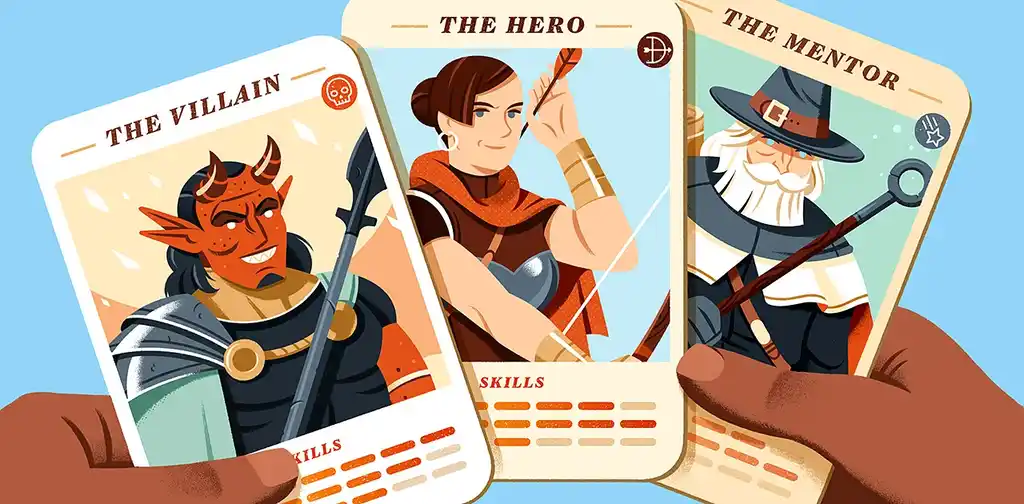
FREE RESOURCE
Reedsy’s Character Profile Template
A story is only as strong as its characters. Fill this out to develop yours.
Magical Realism
You may remember us mentioning magical realism under the umbrella of fantasy — but considering its highbrow style and literary prestige, magical realism is often considered a genre in its own right. Its hallmarks include a real-world setting, a cast of run-of-the-mill characters (no vampires, fairies, or sorcerers), a fluid and non-linear timeline, and supernatural happenings — a baby born with feathered wings, or an egg hatching a ruby — left unexplained. Authors like Toni Morrison have used this literary style to grapple with serious social ills, from colonialism to fascism and slavery.
Q: How can I overcome the fear that my story idea isn’t original or good enough?
Suggested answer
It's easy to walk into a bookstore, pull a finished book off the shelf, read it, and think, "Oh no. I could never write a book like this. I'm not good enough to be a writer."
This kind of thinking is a trap! As an editor, I've read hundreds of early drafts. Even the most exciting, most polished manuscripts that passed my desk needed several rounds of intense editing before they were ready for publication. And I was often seeing manuscripts after they had been through a few revisions already. It's not fair to compare your first draft to a published book that's been through many rounds of professional editing. Everyone's first draft needs work. If you expect your first draft to be on the same level as a published book, then you're going to set yourself up for a lot of self-doubt and disappointment.
However, when you pick up a book and think I could never write this, that's actually true. Not because you're a bad writer, but because your voice is uniquely and distinctively yours. You won't be the next Rick Riordan or the next Angie Thomas--but that's because you're going to be the next you!
Camille is available to hire on Reedsy ⏺
Even seasoned authors struggle with imposter syndrome and doubt themselves. That said, doing your homework is not a bad idea. Find out what books are similar to yours and find out if there is a glut in the market for that topic or if there is a need or hole in the market, and your book might fill a need.
The reality is that good books are not written; they are rewritten. That's why it is so important to work with an editor who can help you revise the book and take it to the next level, so it can become the best it can be.
Melody is available to hire on Reedsy ⏺
Graphic Novel
Some book genres aren’t defined by their content at all, but by their form. Graphic novels are presented to the reader through narrative art (illustrations and typography) either in the traditional panel layout you’ll be familiar with from comic books, or in the artist’s own style. Once considered cheap entertainment for children, graphic novels are increasingly read and respected these days for their rich blend of visuals and writing. This powerful method of storytelling now portrays everything from memoirs, to manga, to adaptations of classic literature. 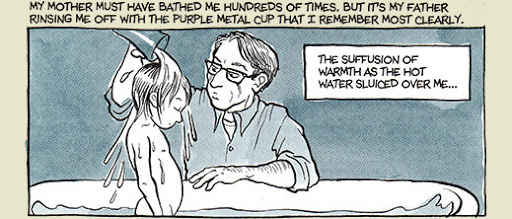
Short Story
Though they can belong to any of the other book genres on this list, short stories are frequently grouped together in their own genre because they’re, well, so much shorter than novels. Often the author will compile a collection linked together by a narrative thread or, more commonly, a shared theme. The stories in A Manual for Cleaning Women by Lucia Berlin, for example, follow a series of women in different occupations — from cleaning women to ER nurses — all struggling to survive.
Young Adult
Young adult fiction, or YA, targets readers aged 12-18 and reflects its readership by following teenage characters as they grapple with the unique challenges of adolescence. Most works of YA fiction can be labeled “coming-of-age novels” in which the characters exit childhood and enter adulthood — a transition that results in a loss of innocence and a shifting sense of identity. Some of the biggest bestsellers in recent years have belonged to this genre, including The Hate U Give by Angie Thomas and any YA novels by John Green.
Pro tip for writing young adult fiction: Though your teen character’s voice should be true to her life experience, you should never “dumb down” the language, story, or style choices in a YA novel.
New Adult
The shiny new penny on this book genres list, new adult is like young adult aged-up: coming-of-age stories after the messiness of adolescence. Its college-age protagonists are walked through the gauntlet of becoming fully-fledged grownups, ditching the stress of the SATs and senior prom for college exams, career transitions, and more mature first times. Big names in New Adult, like Cora Carmack, tend to write steamy romances set in dorm rooms. But this genre isn’t all about collegiate love stories — your gritty urban fantasy or immersive historical fiction could find its home here, too.
Children’s
Books in this genre are written with readers under the age of twelve in mind. Of course, kids will do a lot of growing between the ages of zero and twelve, which is why children’s books range from baby board books all the way up to middle grade ‘epics’ of 50,000 words. Hopefully, if you’re writing children’s literature, you already know you are. But it’s crucial that you also know which age group you’re trying to target, as this will impact the themes, characters, and complexity of your book.
Nonfiction genres
This is a broad category encompassing a number of nonfiction subgenres. From memoirs and biographies to books to self-help and true crime books, there's a type of nonfiction for every kind of reader.
Memoir & Autobiography
Both memoirs and autobiographies provide a true account of the author’s life. They differ in that an autobiography provides a chronological account of your life’s events and accomplishments, whereas a memoir puts the emphasis on only the most defining, emotional moments. Generally, these moments are drawn together by a single theme — or a significant time, place, or relationship — to communicate a message you wish to share with readers. I Know Why The Caged Bird Sings by Maya Angelou is a popular example of a memoir.
Q: What research methods help autobiography writers verify memories and fill gaps?
Suggested answer
Autobiographies/memoirs are a joy to research because you can get all of your information straight from the horse's mouth, so long as the horse is reliable. Also, you have to know the right questions to ask, and dig deeply for unvarnished and truthful answers.
Memoirs are about your world view, your personal impressions, your unique take on life, and what you have learned from your experience. There are no right or wrong answers in memoir, just your truth, as you have lived it and come to understand it. But that's the tricky part. What is your truth? What do you passionately want to say to the world, that will be there long after you are gone? What do you want future generations to understand about your brief sojourn on this planet?
When I am s working with authors on a memoir, I am always encouraging them to think differently, deeply, and comprehensively about the lessons of their experience. To stretch their imaginations, their visions of themselves, and to understand, perhaps in a new and fresh way, what their story has meant.
I've shared a few of the questions that I ask my clients to get them thinking in fresh and innovative ways about their own story, and I thought they might be helpful to share with all of you.
7 Questions to ask yourself When Researching Your Memoir
- What's the big idea? If you had to boil it down to an elevator pitch, what is your essential message to the world? Is there a theme? An overarching lesson? A motif? A distinct quality they all have in common?
- Teaching Moments: What were the milestone moments in your life that taught you an influential lesson that shaped your course? Do they have something in common? Do they all point to a common thread or theme?
- Cultural Context: What was happening in the larger world and in culture at the time your story is occurring? How does this intersect or impact your narrative?
- Mentors and Guides: Who were the people that influenced your path for better or worse? What words of their wisdom or words of criticism stuck with you and why?
- Radical Transparency: What are some of the things you would go back and do differently if you could? Do you have any regrets?
- Self Acknowledgement: What are some of the things you would not change if you had a chance to do it over again? Did you celebrate those victories in the moment, or only later once you understood their impact?
- Moral of the Story: What are the universal and aspirational lessons of your experience, the moral of the your story that applies to everyone, and can be helpful to your reader going forward?
Happy Writing!
Bev is available to hire on Reedsy ⏺
I would say location-based research is one of the most important. While we might remember general impressions about an area we lived in or visited, it's easy to forget names of places or their exact locations. Sometimes these places change names, or vanish altogether, and those are always interesting details to know.
Marisa is available to hire on Reedsy ⏺
Reading autobiographies of people in similar fields or with similar stories. But in general any autobiography can be helpful to read as research. It's important to know the plethora of ways you can approach writing about your own life. As far as personal research, once you set out to write your story, it could be helpful to spend a lot of time gathering important materials. It will be different for every book but things that come to mind are old family photos, journals and letters, family trees, and things like this to add color to your story and give you new ideas.
Josh is available to hire on Reedsy ⏺
Pro tip for writing a memoir: Treat yourself as an interview subject and ask yourself questions that will trigger those life-defining stories — the ups and downs, the events that shaped you, what you sacrificed, what you learned.
Biography
Like autobiographies, biographies provide readers with a person’s life story; but they’re written in the third person by someone other than the subject. Generally, the subject of a biography is (or was) well-known — somebody whose life can teach readers an interesting lesson worth learning. Biographies, memoirs, and autobiographies differ from the rest of the nonfiction on this list, in that they weave a narrative in almost the same way a novel does. A great biography, like Ron Chernow’s Alexander Hamilton, isn’t a laundry list of events, but a life-giving tribute.
Food & Drink
Food and drink is one of nonfiction’s hottest book genres, making it a crowded and highly competitive market. As a result, today’s cookbooks tend to cater to specific cuisines, dietary, and/or lifestyle needs. If you’re writing a cookbook, you might consider pairing recipes with nutritional information, short autobiographical narratives, or even workouts. Jo Wicks’s 30 Day Kickstart Plan and Less Fuss No Waste Kitchen by Lindsay Miles are excellent examples of modern cookbooks.
Art & Photography
This genre is home to a few different kinds of books, all united by their love of art. Your book could find its way into this vibrant and stylish genre if it discusses an artist’s work or an artistic style in detail; if it teaches a specific art method; if it explores a facet of art history; or if it showcases your own art in that chic, coffee-table book way. 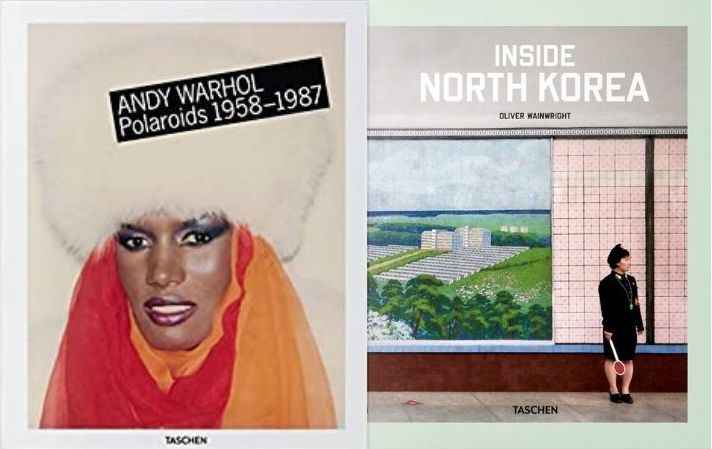
Self-help
Some of the bestselling books in nonfiction, self-help books encourage personal improvement and confidence. Whether the focus is on relationships, emotional well-being, or finances, if you’re writing a book that aims to uplift and empower the reader, then you’re probably writing self-help.
History
The books in this genre lay down the known facts about a historical era, event, or figure. And since this is nonfiction, all the facts have to be accurate (though that doesn’t mean there’s no room for inference or opinion). The goal of these books is to educate and inform the reader, so this genre does include all those textbooks you used in school. But many history books ditch the play-by-play format to chronicle the past in a way more akin to storytelling. One of our favorite history books is Sapiens: A Brief History of Mankind by Yuval Noah Harari.
Travel
Travel memoirs and travelogues, like Jonathan Glancey’s The Journey Matters, take us all over the world, giving even the most devoted homebodies a tantalizing taste of adventure, wildlife, and the great outdoors. These pocket-sized books — featuring destination reviews, lists of where to eat and what to see, and tips for traveling on a budget — are without a doubt some of the most useful titles on the shelves.
True Crime
Crime-fiction writers have put some pretty twisted plots to paper, but if you prefer to chronicle real crimes in all their haunting and fascinating detail, then the true crime genre is where your book belongs. From infamous murders to domestic disappearances, works in this genre pen true stories, about all things fearful and forbidden, that read as smoothly as well-crafted fiction.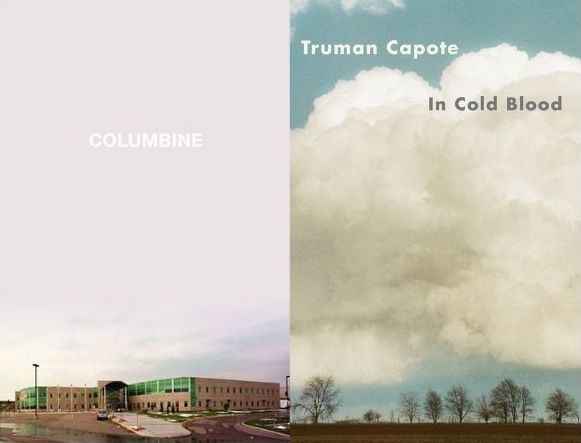
Humor
Laugh-out-loud memoirs by the funniest celebs, satirical essays from the likes of David Sedaris, or gag gifts like How to Adult — all the books in this rib-tickling genre are written with one thing in mind: making readers laugh! So if you’ve compiled a collection of all your favorite dad jokes or penned a cathartic brain-dump of your most cringe-worthy memories, then your book may also belong in the humor genre.
Q: How do genre-specific tropes influence book cover design, and how important are they for appealing to the target audience?
Suggested answer
Very. You want the audience to perceive the book's genre at a passing glance. A part of the design should deliver what the audience expects. But that doesn't mean you can't have fun with the design, either. Start with the tropes, and then put your own spin on them. Best case, you help to modify what audiences expect.
Michael is available to hire on Reedsy ⏺
Genre tropes are crucial in book cover design because they instantly communicate the book's category to potential readers, helping it stand out in a competitive market. By aligning with familiar visual cues while adding a unique twist, a well-designed cover can both meet audience expectations and spark curiosity.
Robert is available to hire on Reedsy ⏺
Essays
An essay may sound like a boring assignment from your school years, but the books in this genre are among some of the most moving and inspirational works of literature there are. Many powerful voices — like James Baldwin and Roxane Gay — have used these short works to reflect on their own personal experiences and views, combining them into a collection that serves as an eye-opening social commentary on a particular theme or subject.
Guide/How-to
Readers turn to this book genre to develop a skill, hobby, or craft. So if you’re an expert in a particular field and you’ve written a book showing hobbyists how to achieve something specific (like “how to master chess openings” or “a guide to floristry”), then this is its home! Of course, one dead giveaway might be your book’s title.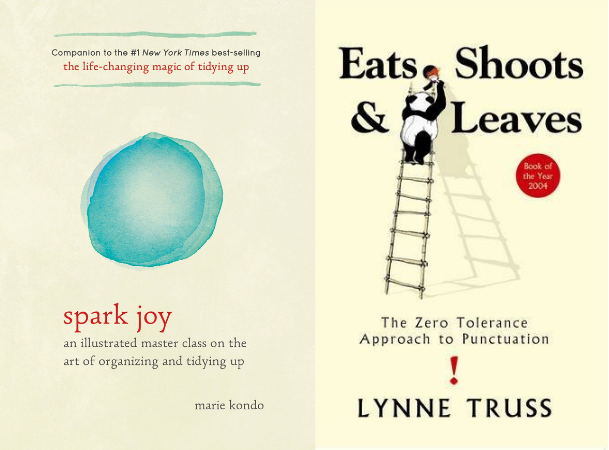
Religion & Spirituality
From histories of the Catholic Church to spiritual guidebooks and memoirs of the Eat, Pray, Love variety, this genre has a place for anything and everything related to the topics of religion and spirituality.
Humanities & Social Sciences
Got something wise to say? Then your book might just belong among the books of this eclectic genre — as long as it discusses a topic related to (deep breath): philosophy, history, literature, language, art, religion, music, or the human condition. This might seem like a pretty wide net to fall into, but keep in mind that books in this genre are typically quite academic; if you’ve written more of a free-flowing spiritual guide, it probably belongs in the previous genre.
Parenting & Families
Parents and families struggling with discipline, education, bonding, the care of a newborn baby, or a child with special needs, can turn to this well-stocked genre of books when they need to bring in the reinforcements. If you’ve written a memoir that’ll have families whole-heartedly nodding in agreement, or a guide brimming with advice for frazzled parents, then you can find a place for your book in the parenting and families section.
Science & Technology
The job of science nonfiction is not to predict the future, but to make sense of the world we’re currently living in — which, quite honestly, can feel like science fiction to some of us! Readers of this genre range from complete beginners trying to understand the things around them to technophiles whose brains are whirring to keep up with the pace of change, so there’s bound to be a niche for your book, however advanced it is.
Children’s
As much as kids love fairytales and talking animals, they’re often just as happy to pick up a nonfiction book at storytime. Whether it’s an activity book to keep them busy, a powerful true story like Malala’s Magic Pencil, or a children’s encyclopedia to feed their brains, children’s nonfiction is all about making learning fun. And the wildly popular Horrible Histories series has proven that this genre can compete with wizards and superheroes at every age!
There you have it: 35 of the most popular genres of books. Hopefully, this list will help you get your foot in the right door. But if your book doesn’t slot neatly into any of these categories, don’t be afraid to declare it a hybrid, or to dig a little deeper into the subcategories that you’ll find in the shade of these umbrella genres.
And no matter what kind of book you're writing, check out our book development template to get started.
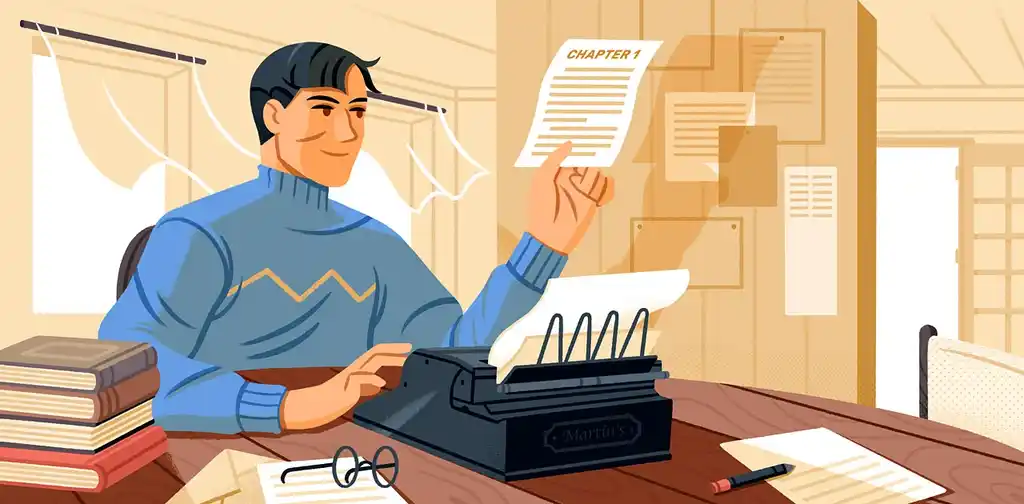
FREE RESOURCE
Get our Book Development Template
Use this template to go from a vague idea to a solid plan for a first draft.
